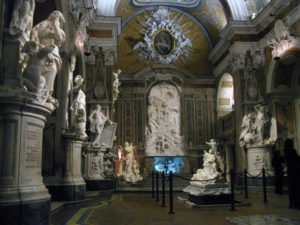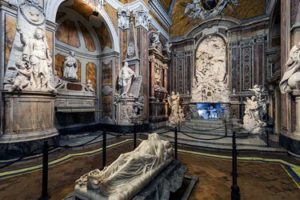PRIVACY POLICY
1. Premessa
In questa sezione sono contenute le informazioni relative alle modalità di gestione di wellnesshm in riferimento al trattamento dei dati degli utenti di wellnesshm.
La presente informativa ha valore anche ai fini del Codice in materia di protezione dei dati personali (art. 13 del d.lg. n. 196/2003) per i soggetti che interagiscono con wellnesshm ed è raggiungibile all’indirizzo corrispondente alla pagina iniziale:
www.wellnesshm.com
L’informativa è resa solo per www.wellnesshm.com e non anche per altri siti web eventualmente consultati dall’utente tramite link in esso contenuti.
Scopo del presente documento è fornire indicazioni circa le modalità, i tempi e la natura delle informazioni che i titolari del trattamento devono fornire agli utenti al momento della connessione alle pagine web di wellnesshm, indipendentemente dagli scopi del collegamento stesso, secondo la Raccomandazione n. 2/2001 che le autorità europee per la protezione dei dati personali, riunite dall’art. 29 della direttiva n. 95/46/CE, adottata il 17 maggio 2001 per la raccolta dei dati personali on-line.
2. Il trattamento dei dati
Titolare
Nel corso dell’utilizzazione di wellnesshm i dati relativi a presone identifcate o identificabili possono essere trattati per fornire servizi ovvero migliorare questi utlimi tanto per servizi basici come l’individuazione della lingua dell’utente quanto per servizi più complessi.
Titolare del trattamento è Aquilino Tirone con sede in:
Via Canapini 6 Castel di Sangro
Luogo
Il trattamento dei dati generato dall’utilizzo di wellnesshm avviene presso la sede del titolare del trattamento con l’intervento dei soggetti di esso incaricati. In caso di necessità, i dati connessi al servizio newsletter possono essere trattati dal responsabile del trattamento o soggetti da esso incaricati a tal fine presso la relativa sede.
I dati trattati
Cookies
I cookies sono dati che vengono inviati da wellnesshm al browser internet dell’utente e vengono memorizzati da questo per poi essere ritrasmessi al sito alla visita successiva.
Essi possono essere usati per monitorare le sessioni, per autenticare un utente in modo che possa accedere a un sito senza digitare ogni volta nome e password e per memorizzare le sue preferenze.
Esistono tanti tipi di cookies classificabili per per aspetti tecnici, durata, provenienza e funzione.
Cookies tecnici
Ci sono numerose tecnologie usate per conservare informazioni nel computer dell’utente, che poi vengono raccolte dai siti. Tra queste la più conosciuta e utilizzata è quella dei cookies HTML.
Essi servono per la navigazione e per facilitare l’accesso e la fruizione del sito da parte dell’utente. Sono necessari alla trasmissione di comunicazioni su rete elettronica ovvero al fornitore per erogare il servizio richiesto dal cliente.
Le impostazioni per gestire o disattivare i cookies possono variare a seconda del browser internet utilizzato.
Ad ogni modo, l’utente può gestire o richiedere la disattivazione generale o la cancellazione dei cookies, modificando le impostazioni del proprio browser internet. Tale disattivazione può rallentare o impedire l’accesso ad alcune parti del sito.
L’uso di cookies tecnici consente la fruizione sicura ed efficiente del sito.
I cookies che vengono inseriti nel browser e ritrasmessi mediante Google Analytics o tramite il servizio Statistiche di Blogger o similari sono tecnici solo se utilizzati a fini di ottimizzazione del sito direttamente dal titolare del sito stesso, che potrà raccogliere informazioni in forma aggregata sul numero degli utenti e su come questi visitano il sito. A queste condizioni, per i cookies analytics valgono le stesse regole, in tema di informativa e consenso, previste per i cookies tecnici.
Cookies di durata
Dal punto di vista della durata si possono distinguere cookies temporanei di sessione che si cancellano automaticamente al termine della sessione di navigazione e servono per identificare l’utente e quindi evitare il login ad ogni pagina visitata e quelli permanenti che restano attivi nel pc fino a scadenza o cancellazione da parte dell’utente.
Potranno essere installati cookies di sessione al fine di consentire l’accesso e la permanenza nell’area riservata del portale come utente autenticato.
Essi non vengono memorizzati in modo persistente ma esclusivamente per la durata della navigazione fino alla chiusura del browser e svaniscono con la chiusura dello stesso. Il loro uso è strettamente limitato alla trasmissione di identificativi di sessione costituiti da numeri casuali generati dal server necessari per consentire l’esplorazione sicura ed efficiente del sito.
Cookies di terze parti
In relazione alla provenienza si distinguono i cookies inviati al browser direttamente dal sito che si sta visitando e quelli di terze parti inviati al computer da altri siti e non da quello che si sta visitando.
I cookies permanenti sono spesso cookies di terze parti.
La maggior parte dei cookies di terze parti è costituita da cookies di tracciamento usati per individuare il comportamento online, capire gli interessi e quindi personalizzare le proposte pubblicitarie per gli utenti.
wellnesshm utilizza i seguenti cookies:
cookies tecnici di navigazione, cookie tecnici analytics e cookies tecnici funzionali
Dati di navigazione
I sistemi informatici e le procedure software preposte al funzionamento di questo sito web acquisiscono, nel corso del loro normale esercizio, alcuni dati personali la cui trasmissione è implicita nell’uso dei protocolli di comunicazione di Internet.
Si tratta di informazioni che non sono raccolte per essere associate a interessati identificati, ma che per loro stessa natura potrebbero, attraverso elaborazioni ed associazioni con dati detenuti da terzi, permettere di identificare gli utenti.
In questa categoria di dati rientrano gli indirizzi IP o i nomi a dominio dei computer utilizzati dagli utenti che si connettono al sito, gli indirizzi in notazione URI delle risorse richieste, l’orario della richiesta, il metodo utilizzato nel sottoporre la richiesta al server, la dimensione del file ottenuto in risposta, il codice numerico indicante lo stato della risposta data dal server ed altri parametri relativi al sistema operativo e all’ambiente informatico dell’utente.
Questi dati vengono utilizzati al solo fine di ricavare informazioni statistiche anonime sull’uso del sito e per controllarne il corretto funzionamento e vengono cancellati immediatamente dopo l’elaborazione.
I dati potrebbero essere utilizzati per l’accertamento di responsabilità in caso di ipotetici reati informatici ai danni del sito: salva questa eventualità, allo stato i dati sui contatti web non persistono per più di sette giorni.
Dati forniti dall’utente
L’invio facoltativo, esplicito e volontario di posta elettronica agli indirizzi indicati su questo sito comporta la successiva acquisizione dell’indirizzo del mittente, necessario per rispondere alle richieste, nonché degli eventuali altri dati personali inseriti nella missiva.
Specifiche informative di sintesi verranno progressivamente riportate o visualizzate nelle pagine del sito predisposte per particolari servizi a richiesta.
3. Facoltatività del conferimento di dati
L’utente è sempre libero di fornire i dati personali richiesti per l’invio di materiale informativo, salvo quanto necessario per la navigazione.
Il mancato conferimento, per contro, può comportare l’impossibilità di ottenere quanto richiesto.
4. Modalità del trattamento
I dati personali sono trattati con strumenti automatizzati per il tempo strettamente necessario a conseguire gli scopi per cui sono stati raccolti.
5. Diritti degli interessati
Le informazioni circa il contenuto, l’origine, l’esattezza, l’integrazione, l’aggiornamento ovvero la correzione dei dati sono accessibili al proprietario degli stessi così come la loro l’esistenza negli archivi di wellnesshm che può essere verificata mediante richiesta. Parimenti si ha il diritto di chiedere la cancellazione, la trasformazione in forma anonima o il blocco dei dati trattati in violazione di legge, nonché di opporsi in ogni caso, per motivi legittimi, al loro trattamento.
Le richieste vanno rivolte:
- per e-mail, all’indirizzo: wellnesshm@libero.it
6. Sicurezza dei dati forniti
La sicurezza dei dati è garantita durante l’utilizzazione della piattaforma dalla conformità delle procedure adottate da wellnesshm sito ufficiale al Codice Privacy (D.Lgs 196/2003) con particolare riguardo ai dati personali dell’utente.
7. Modifiche al presente documento
Il presente documento, pubblicato all’indirizzo:
http://www.wellness.com/trattamento-della-privacy
costituisce la privacy policy di questo sito. Esso può essere soggetto a modifiche o aggiornamenti.
Il documento è conforme alle disposizioni normative in materia.





